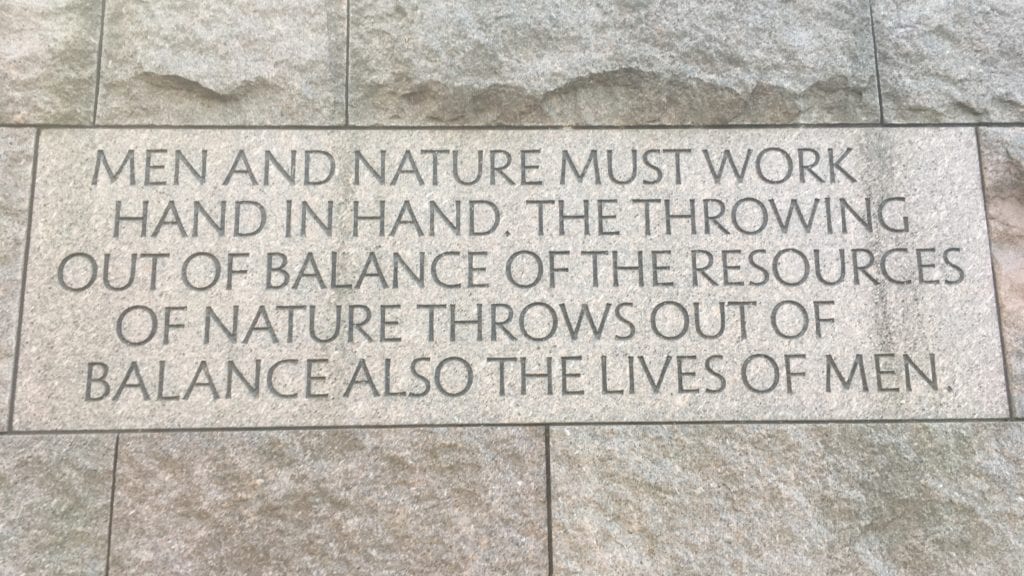
Earlier this week, I had a great opportunity to collaborate with AMC, National Audubon Society, and other members of the Land and Water Conservation Fund Coalition to ask for congressional support for the Land and Water Conservation Fund (LWCF). LWCF is an important 52-year old funding mechanism that provides important support for community, state, and federal conservation and recreation areas.
Created by Congress in 1964, the LWCF was a bipartisan commitment to safeguard natural areas, water resources, and our cultural heritage, and to provide recreation opportunities to all Americans. National parks like Rocky Mountain, the Grand Canyon, and the Great Smoky Mountains, as well as national wildlife refuges, national forests, rivers and lakes, community parks, trails, and ball fields in every one of our 50 states were set aside for Americans to enjoy thanks to federal funds from the LWCF.
It was a simple idea: use revenues from the depletion of one natural resource — offshore oil and gas — to support the conservation of another precious resource — our land and water. Every year, $900 million in royalties paid by energy companies drilling for oil and gas on the Outer Continental Shelf (OCS) are put into this fund. The money is intended to protect national parks, areas around rivers and lakes, national forests, and national wildlife refuges from development, and to provide matching grants for state and local parks and recreation projects. Over the years, LWCF has grown and evolved to include grants to protect working forests, wildlife habitat, critical drinking water supplies, and disappearing battlefields, as well as increased use of easements.
In Maine, the LWCF has provided funding to help protect some of our most special places and ensure recreational access for hunting, fishing, and other outdoor activities. Maine has received approximately $182 million in LWCF funding over the past five decades, protecting places such as Acadia National Park and Preserve, the Saint Croix Island International Historic Site, Rachel Carson National Wildlife Refuge, and the Appalachian National Scenic Trail. LWCF state assistance grants have further supported hundreds of projects across Maine’s state and local parks and forests, including Rangeley Lake State Park, Bigelow Preserve, and the Allagash Wilderness Waterway.
Forest Legacy Program (FLP) grants are also funded under LWCF, to help protect working forests. The FLP cost-share funding supports timber sector jobs and sustainable forest operations while enhancing wildlife habitat, water quality, and recreation. For example, the FLP contributed to places such as Grafton Notch and the Katahdin Forest. The FLP assists states and private forest owners in maintaining working forest lands through matching grants for permanent conservation easement and fee acquisitions. It has leveraged $74 million in federal funds to invest $130 million in Maine’s forests, while protecting air and water quality, wildlife habitat, access for recreation, and other public benefits provided by forests.
Luckily for us, Maine’s congressional delegation has a history of supporting the funding for LWCF. Unfortunately, that support has not been consistent among all parties in Washington, including the Trump administration. The objective of our visits was to thank our members of the House and Senate for their support for LWCF and to discuss avenues to ensure consistency in future funding streams. The timing was particularly important because we were in the midst of the omnibus budget bill being negotiated.
To fund the LWCF, several legislative options are available. One is by direct legislation; another is by attaching the funding to other important legislation, such as the omnibus bill to fund the federal government. Attaching a rider to a budget bill has become a frequently-used tool for a variety of issues.
The Omnibus Appropriations Bill was signed today and includes LWCF funding of $436 million (up from $400 million last year). This means projects across the country that once appeared like they would miss out on funding this year will be able to move forward — which is great news. The bad news, however, is that no extension of LWCF’s authorization was included in the omnibus. Our big concern here is obviously how this gets done between now and September 30th with few legislative vehicles on the horizon.
Still, we were successful when LWCF last faced expiration, and we know we will be successful again! In our conversations this week, we discussed approaches that can avoid year-by-year funding — mostly because many of the associated projects have a multi-year development timeline. Increasing assurance on forward funding reduces the risk of hammering out a project in Maine, only to see a lapse in funding jeopardize its successful completion.
Historically, Maine Audubon has focused its advocacy efforts within the state. However, recent efforts in Washington to pull back investments and protections for Maine’s natural resources have spurred us to expand our efforts in Washington. This is my second trip to Washington in the past two months, and it won’t be my last. There’s important work to be done. At a time when decision makers are trying to navigate a very polarized political environment, Maine Audubon’s science-based, pragmatic approach to advocacy means we’re well-positioned to make a big impact.
Want to stay informed about these efforts? Sign up for our Action Alerts.
